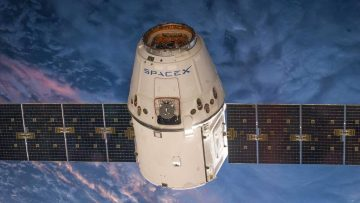The space industry is shooting to the moon, both literally and figuratively. According to Our World in Data, In 2014, 241 objects (e.g., satellites, probes, spacecraft, etc.) were launched into space — 2023 saw that number rise to 2,664, a tenfold increase. Global investments in space startups also increased more than 10 times over that period, reaching $17.9 billion last year.
This rise in space-based innovation will continue to bring forth new investments, technologies, and discoveries but also obstacles — literally, like meteoroids and trash. One piece of technology that will help define and transform this modern space era is none other than the satellite.
Yeah, it’s not a Star Wars-esque laser blaster or faster-than-the-speed-of-light spaceship, but it does let you stream access to Star Wars. One might even go as far as to say that satellites, humanmade objects put into orbit around a celestial body, are a largely underappreciated technology in modern society. They are behind cable and network television, telephone communications, GPS services, weather data, scientific discoveries and development, land management, and climate monitoring, just to name a few.

Graphic Courtesy Our World In Data
According to Statista, more than 6,900 active satellites — and thousands of inactive — were orbiting the Earth in 2022. Likewise, estimates from MIT say by 2025, up to 1,100 new ones could be launched every year. With the growing emphasis on climate change and sustainability across industries, the space industry has increased efforts to reduce waste across the board.
Trash is a big issue in space. There aren’t oceans or landfills for us to dump it in, and standardized regulations for dealing with space waste don’t really exist yet.
Satellites take up a non-insignificant portion of the current space junk floating near Earth — and by near, I mean within 1,200 miles of its surface. Understandably, a growing number of startups, governments, and organizations are working to prolong the life of old satellites and make newer versions more sustainable.
The UK Space Agency recently launched an initiative to extend the life of satellites as part of its larger push to produce more sustainable satellites. Additionally, the agency also contracted ClearSpace to research satellite refueling and create a prototype design. U.S.-based specialist firm OrbitFab and a few others will also work on the project, aptly named REFUEL.ME.
Space industry titan SpaceX took a more verbatim approach to reducing waste earlier this year when it announced that it would deorbit 100 Version 1 Starlinks over the ensuing six months. The company noted the reasoning behind the move in its press release, “With space sustainability in mind, SpaceX has to date initiated controlled deorbits on 406 satellites out of the nearly 6,000 Starlink satellites launched.”

Photo Courtesy SpaceX
One potential game-changer for the manufacturing of longer-lasting satellites? Perovskite solar cells. Low Earth orbit satellites tend to use solar power, which requires solar panels. They are typically made from gallium arsenide panels, which require gallium, an expensive but durable and efficient metal.
Perovskite solar cells are cheaper to produce and more sustainable than gallium-based ones, but they still lag behind in efficiency. However, startups like Tampa-based Merida Aerospace are developing satellites with perovskite solar cells and closing the efficiency gap with new research.
There are new startups, seed-funding rounds, and initiatives around sustainable satellite technology every day, and more is on the horizon. A growing number of countries are developing their space programs, and the true potential scale of the space industry is largely unknown, just like space.





